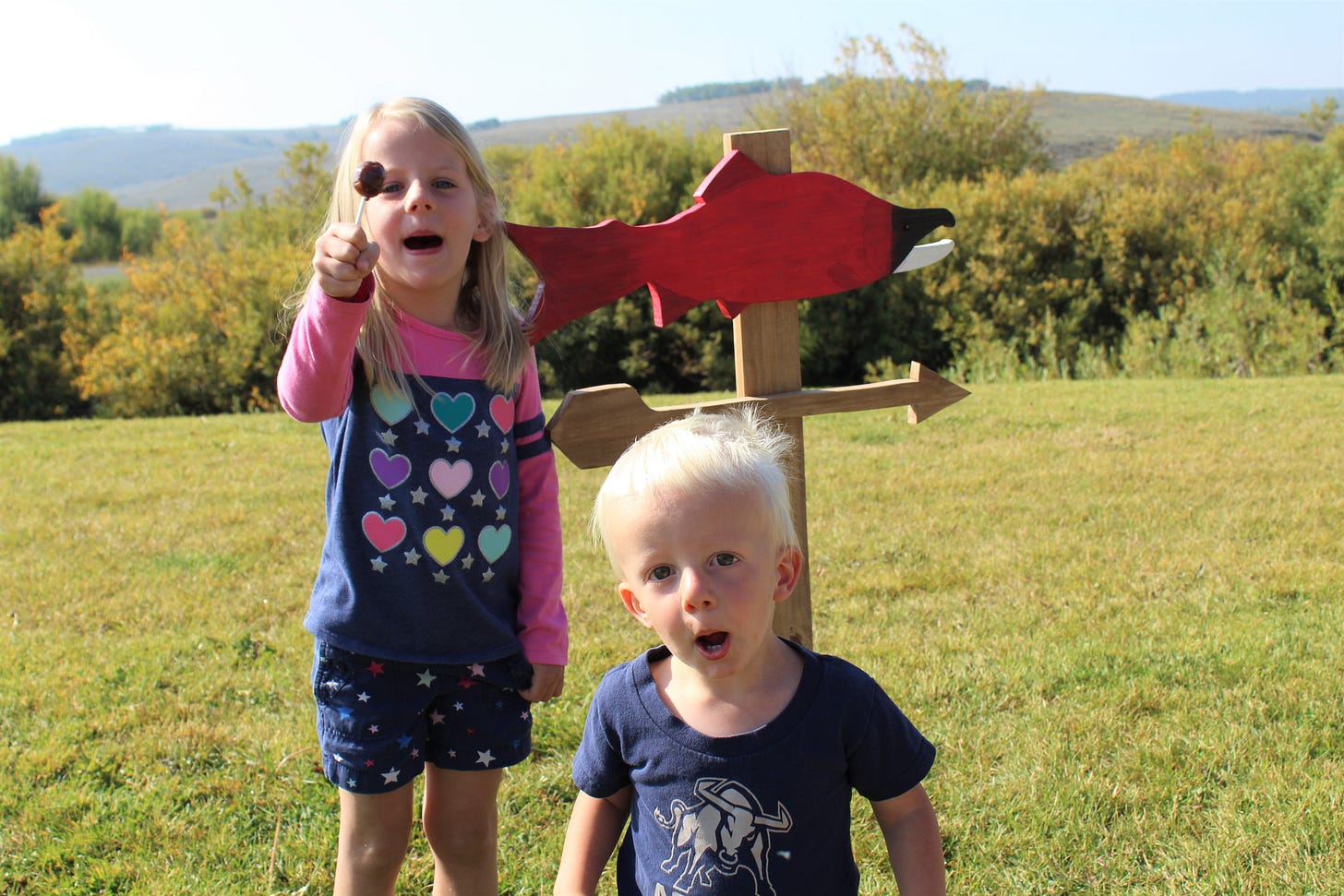Why the Salmon Run
Or, in other words, my questions (and some answers) about spawning salmon

I think we’ve all heard of the epic tale of the Pacific salmon: how they migrate from freshwater rivers and streams to the wide ocean as young fish, and then, when they’ve reached maturity, they return (navigating by smell!) to their home stream or river to lay their eggs for the process to start over again. It truly is a marvel of nature.
For the last few years I’ve thought of the spawning salmon as much a harbinger of autumn as cooler temperatures and changing leaf colors. This year I was lucky enough to see the salmon at two different reservoirs - Porcupine Dam in Northern Utah and Strawberry Reservoir in Central-ish Utah. Thanks to a helpful Division of Wildlife Resources employee at the Strawberry Reservoir fish trap I was able to learn a little more about the salmon this year
Here are some of the questions about salmon that have made me curious enough to look for an answer:
If the salmon that I’ve heard about live in the ocean for part of their life before returning to their natal waters, how do the kokanee that occur in Utah fit into the picture?
It turns out that Kokanee are a land-locked variant of the sockeye. Somewhere along the line some sockeye got stuck in a lake and they continued to breed and live there and now we have Kokanee. But, even though they spend their life living in freshwater only, the Kokanee exhibit similar spawning behavior. Native to the Pacific Northwest, Kokanee are popular sport fish and so have been stocked in many western states, including here in Utah.
The Kokanee that live in Strawberry Reservoir generally swim up the Strawberry River to spawn, and during at least part of the spawning season they are diverted into the “fish trap” where DWR personnel collect the eggs and milt (that’s fish sperm) to grow in hatcheries state before releasing them into various lakes around the state. Their target goal is 2 million eggs collected, but the employee I talked with said that they’ll have to set up portable catches in different locations around the lake this year if they want to reach that goal since many of the salmon were opting to spawn in the bays and along the shores this year. A possible side effect of the lower lake level due to the ongoing drought.
How do the fish know it’s time to spawn? Is it due to environmental or physiological cues?
Spawning time is determined mainly by physiological cues, though the environment definitely can influence it. The DWR guy explained to me that if we were to look at a bell curve with the age of the fish along the x-axis and the number of spawning individuals along the y-axis, then the top of that bell would be the 3 year old salmon. One tail of the curve would be the few that spawn at a 1 yr or younger with the other tail representing the fish that spawn at 5 years old.
As for environmental pressure - the big one he noted was that fish kept in the hatchery too long will show signs of spawning readiness at less than a year.
Why do they turn red when they spawn?
They don’t turn red until they’ve reached sexual maturity, so it may be a mating/selection adaptation. The red color comes from the carotenoid-rich food they eat. Interestingly, though the ocean diet of the sockeye salmon is more carotenoid-rich than the freshwater diet of the kokanee, the sexual preference for red salmon led to the ability of the kokanee to more efficiently process the carotenoids from the food they do eat. The major down side of turning red is that they become much more visible to predators such as eagles, osprey, and bears. (I’ve never seen bear catching salmon in real life, but these livecam views are pretty awesome.)
How long do they “run”?
The female salmon will travel upstream until they find a suitable place to make their redd (that’s fish-speak for nest) where they’ll lay their eggs, and then within a few days they will die. The male salmon will follow along and jostle for position to spread their milt to fertilize the eggs. They’ll hang out near the redd to protect it and claim paternity for 1-2 weeks before they die. Some species of salmon will make multiple redds, each fertilized by a different male.
Typically in Utah the spawning goes from September - November. I’ve had the best luck seeing them in the first half of September, so if you’re looking to see them this year you may be out of luck. Here in Utah there are four (that I know of) locations to view the salmon run: Porcupine Reservoir, Causey Reservoir, Jordanelle Reservoir, and Strawberry Reservoir. If you’re heading out to any of these places this fall let me know if you happen to see any still running.
Have you seen the salmon run? I’d love to hear about it so hit reply or leave a comment below!


This was so fascinating. I learned so many things. I've often wondered how there can be salmon runs in a landlocked state and now I know :)